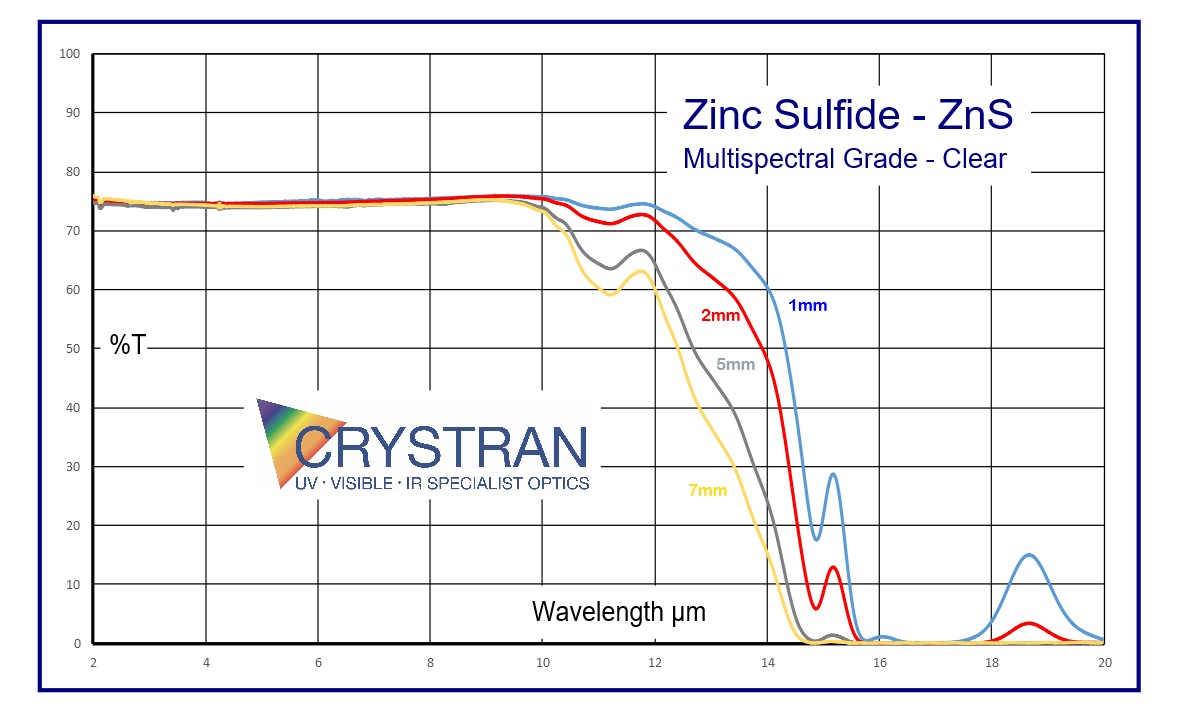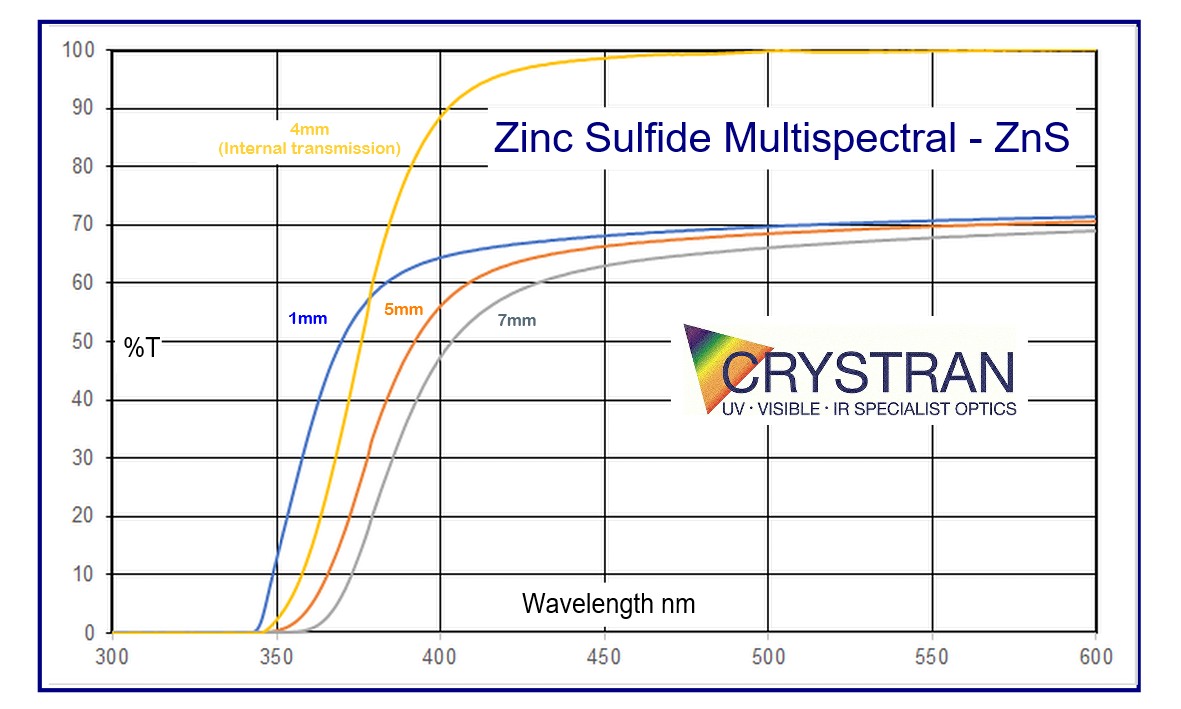

Zinc Sulphide (Zinc Sulfide) Multispectral (ZnS)
ZnS Multispectral (water-clear) is used for IR windows and lenses in the thermal band (8 to 14 μm) where maximum transmission and lowest absorption is required. Also selected for use where visible alignment is an advantage.
♦ ZnS MS Visible transmission data ©2020. Open source with acknowledgement to Crystran Ltd.
♦ ZnS MS IR Transmission data ©2020. Open source with acknowledgement to Crystran Ltd.




Click to access current Zinc Sulphide Guide to Cutting
| µm | No |
|---|---|
| 0.4047 | 2.54515 |
| 0.4358 | 2.48918 |
| 0.4678 | 2.44915 |
| 0.4800 | 2.43691 |
| 0.5086 | 2.41279 |
| 0.5461 | 2.38838 |
| 0.5476 | 2.36789 |
| 0.6438 | 2.34731 |
| 0.6678 | 2.34033 |
| 0.7065 | 2.33073 |
| 0.7800 | 2.31669 |
| 0.7948 | 2.31438 |
| µm | No |
|---|---|
| 0.8521 | 2.30659 |
| 0.8943 | 2.30183 |
| 1.0140 | 2.29165 |
| 1.1287 | 2.28485 |
| 1.5296 | 2.27191 |
| 2.0581 | 2.26442 |
| 3.000 | 2.25772 |
| 3.500 | 2.25498 |
| 4.000 | 2.25231 |
| 4.500 | 2.24955 |
| 5.000 | 2.24661 |
| 8.000 | 2.22334 |
| µm | No |
|---|---|
| 9.000 | 2.21290 |
| 10.00 | 2.20084 |
| 11.25 | 2.18317 |
| 12.00 | 2.17101 |
| 13.00 | 2.15252 |
Zinc Sulphide is produced by synthesis from Zinc vapour and H2S gas, forming as sheets on Graphite susceptors. Zinc Sulphide is microcrystalline in structure, the grain size being controlled to produce maximum strength. Multispectral grade is then Hot Isostatically Pressed (HIP) to improve the mid IR transmission and produce the visibly clear form. Single crystal ZnS is available, but is not common.
Zinc Sulphide oxidizes significantly at 300°C, exhibits plastic deformation at about 500°C and dissociates about 700°C. For safety, Zinc Sulphide windows should not be used above 250°C in normal atmosphere.
References:
(1) Refractive Index of Zinc Sulfide in the 0.405 - 13µm range. Mary Debenham (NPL) Applied Optics / Vol 23, No 14 / July 1984